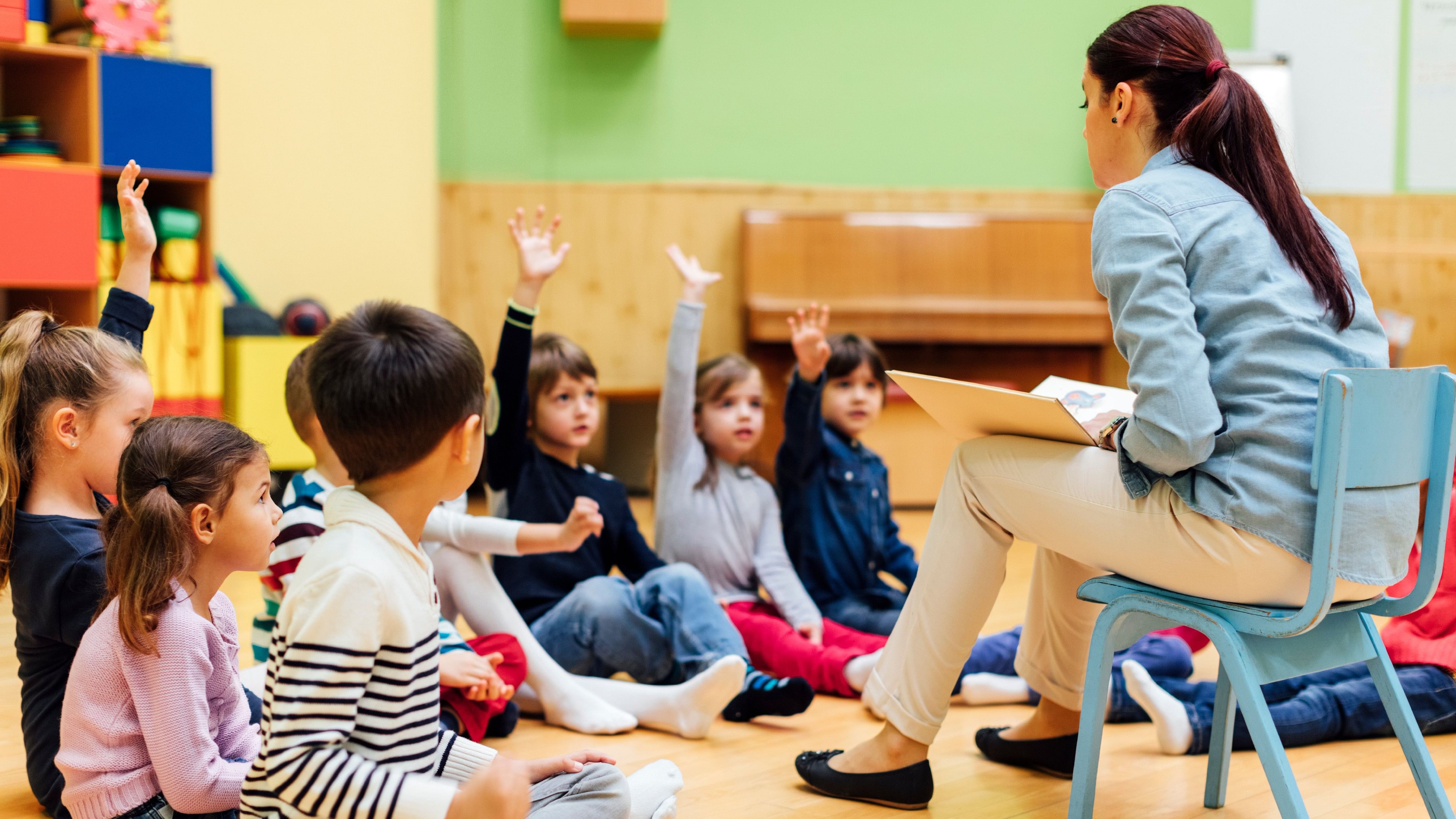
Preschool teacher telling a story to children. Children answering the questions. Children sitting on the floor. Models in this shot are part of real kindergarten group and their teacher. Happy beautiful diverse, Teachers
In today’s dynamic educational landscape, storytelling has captured the imagination of educators as a potent pedagogical tool. Yet, while its resurgence feels contemporary, storytelling is far from a new concept; it is, in fact, as ancient as humanity itself. Long before the advent of written language, oral traditions were the principal means of transmitting knowledge, culture, and values. In this context, it is fitting and timely that educators are increasingly embracing storytelling in an era often dominated by digital tools and data-driven approaches.
The roots of storytelling in education trace back to the earliest human societies, where it served as the foundational method for preserving knowledge. Historical examples abound: the ancient Greeks used epic poems like the Iliad and Odyssey not merely as entertainment but as educational tools, instilling ethical norms and cultural values.
Similarly, India’s Panchatantra tales were crafted to impart wisdom and moral lessons, reflecting the deep interconnection between storytelling and education. Even philosophical giants like Plato acknowledged the power of myths and stories in shaping young minds’ moral and intellectual development.
In the Indian context, storytelling is deeply embedded in the guru-shishya (teacher-student) tradition. Complex philosophical and ethical teachings are often conveyed through parables and fables, ensuring that wisdom is passed down through generations.
21st century trends
In the 21st century, storytelling has gained renewed significance as educators seek to engage students more meaningfully and holistically. The digital age, paradoxically, has amplified the relevance of storytelling, offering new platforms and media through which stories can be told, shared, and reimagined.
Research consistently supports storytelling’s effectiveness as a pedagogical tool, demonstrating its ability to enhance student engagement, improve information retention, and foster critical thinking. A 2017 study published in Educational Researcher revealed that students taught through storytelling exhibited better comprehension and recall than those taught through traditional methods.
Moreover, storytelling has been shown to cultivate emotional intelligence, empathy, and cultural awareness among students—qualities that are increasingly important in our interconnected and globalized world.
The advantages of storytelling in education are multifaceted. Stories uniquely captivate attention, drawing students into a narrative that enhances their engagement with the subject matter. Stories are easier to remember than abstract concepts or isolated facts because they contextualize information within a narrative framework, making it more likely to be retained and recalled.
Additionally, storytelling hones higher-order thinking skills; their critical thinking abilities are sharpened as students analyse plot developments, characters, and underlying messages. This analytical process encourages students to infer, interpret, and evaluate, fostering a deeper understanding of the material. Furthermore, stories allow students to experience multiple perspectives, cultivating empathy and emotional intelligence—crucial qualities in today’s diverse and often polarized classrooms.
Beyond these cognitive benefits, storytelling promotes inclusivity by offering a platform for sharing diverse cultural narratives. Students develop a broader, more nuanced worldview by exploring stories from various cultures. This exposure to different perspectives enriches their understanding of the world and cultivates a sense of respect and appreciation for diversity. This could lead to more inclusive and culturally responsive teaching practices, helping to bridge the gap between different cultural and social backgrounds.
However, successfully incorporating storytelling into education requires careful preparation and skill. For educators, this means developing expertise in narrative construction, delivery, and adaptation to various learning contexts. Professional development programs and workshops on storytelling techniques can equip teachers with the tools to effectively integrate storytelling into their teaching practices.
Embracing the technique
Recognising its potential, many educational institutions and organisations in India and abroad have embraced storytelling as a key component of their pedagogical approach. For example, India’s Storywallahs and Kathalaya Academy of Storytelling have been at the forefront of training educators in storytelling.
Similarly, prestigious institutions like Harvard University and the University of Southern California have integrated storytelling into their curricula. Harvard’s Graduate School of Education offers courses exploring narrative’s role in teaching and learning. At the same time, USC’s School of Cinematic Arts incorporates storytelling across various disciplines, not just for film students but for learners in diverse fields.
Students, too, should be encouraged to engage actively in storytelling as listeners and narrators. Incorporating storytelling into various aspects of the curriculum—whether in creative writing, history, science, or social studies—can foster a more engaging and enriching educational experience.
Storytelling, therefore, is not merely a relic of the past but a vital component of contemporary education. Its ability to engage, educate, and inspire makes it an invaluable tool for educators at all levels. As the educational landscape evolves, storytelling will remain a powerful means of connecting students with knowledge and culture.
Incorporating storytelling into the curriculum requires intentionality and creativity from educators. The rewards—student engagement, retention, critical thinking, and emotional intelligence—are worth the effort. Storytelling is more than just a method of instruction; it is a means of making education a transformative experience.
(The writer is a professor and dean of Christ University, Bengaluru)